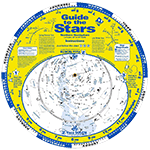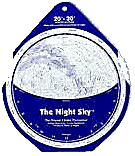|
1
|
Mars nearest to Earth at 2h UT. 81.45 million km.
|
|
2
|
Moon near Jupiter at 4h UT (evening sky). Mag. −2.6.
• Jupiter (Wikipedia)
|
|
5
|
Moon near Uranus at 18h UT (evening sky). Mag. 5.7. Occultation visible from western Europe, the Middle East, and north Asia.
• Occultation of Uranus (IOTA)
|
|
6
|
Moon near the Pleiades at 23h UT (evening sky).
• The Pleiades (Wikipedia)
|
|
7
|
Moon near Aldebaran at 16h UT (midnight sky).
• Aldebaran (Wikipedia)
|
|
8
|
Full Moon at 4:09 UT.
|
|
8
|
Moon near Mars at 5h UT (midnight sky). Mag. −1.9. Occultation visible from USA, Canada, Greenland and western Europe.
• Mars (Wikipedia)
|
|
8
|
Mars at Opposition at 6h UT. Mag. −1.9.
|
|
9
|
Moon near M35 star cluster at 13h UT (morning sky).
• Messier 35 (Wikipedia)
|
|
11
|
Moon near Castor at 2h UT (morning sky).
|
|
11
|
Moon near Pollux at 8h UT (morning sky).
|
|
12
|
Moon at apogee (farthest from Earth) at 0h UT (distance 405,869km; angular size 29.4').
|
|
12
|
Moon near Beehive cluster M44 at 12h UT (morning sky).
• Beehive Cluster (Wikipedia)
• M44: The Beehive Cluster (APOD)
|
|
13
|
Venus at southernmost declination (−24.2°) at 2h UT.
|
|
14
|
Moon near Regulus at 10h UT (morning sky).
• Regulus (Wikipedia)
|
|
14
|
Geminid Meteor Shower peaks in a broad maximum centred at 13h UT. Produces bright, medium-speed meteors at its peak (up to 80 meteors/hour). Most reliable meteor shower. Moonlight will interfere once the Moon rises.
• Meteor Shower Calendar (IMO)
• Geminids (NASA)
• Geminids of the North (APOD)
|
|
16
|
Last Quarter Moon at 8:58 UT.
|
|
18
|
Moon near Spica at 18h UT (morning sky).
• Spica (Wikipedia)
|
|
21
|
Mercury at greatest elongation east at 15h UT (20° from Sun, evening sky). Mag. −0.5.
|
|
21
|
December solstice at 21:48 UT. The time when the Sun reaches the point farthest south of the celestial equator marking the start of winter in the Northern Hemisphere and summer in the Southern Hemisphere.
• December Solstice (Wikipedia)
|
|
22
|
Moon near Antares at 1h UT (morning sky).
|
|
23
|
New Moon at 10:17 UT. Start of lunation 1237.
|
|
24
|
Moon at perigee (closest to Earth) at 8:34 UT (distance 358,270km; angular size 33.4').
|
|
24
|
Moon, Mercury and Venus within a circle of diameter 4.9° at 16h UT (about 18° from Sun, evening sky). Mags. −0.3 and −3.9.
|
|
26
|
Moon near Saturn at 19h UT (evening sky). Mag. 0.8.
• Saturn (Wikipedia)
|
|
29
|
Mercury 1.4° N of Venus at 8h UT (evening sky). Mags. 0.4 and −3.9.
|
|
29
|
Moon near Jupiter at 13h UT (evening sky). Mag. −2.4.
• Jupiter (Wikipedia)
|
|
30
|
First Quarter Moon at 1:21 UT.
|
|
|
|
All times Universal Time (UT).
- US Eastern Standard Time = UT − 5 hours.
- US Pacific Standard Time = UT − 8 hours.
- Australian Eastern Daylight Time = UT + 11 hours
- Singapore Standard Time = UT + 8 hours.
|



